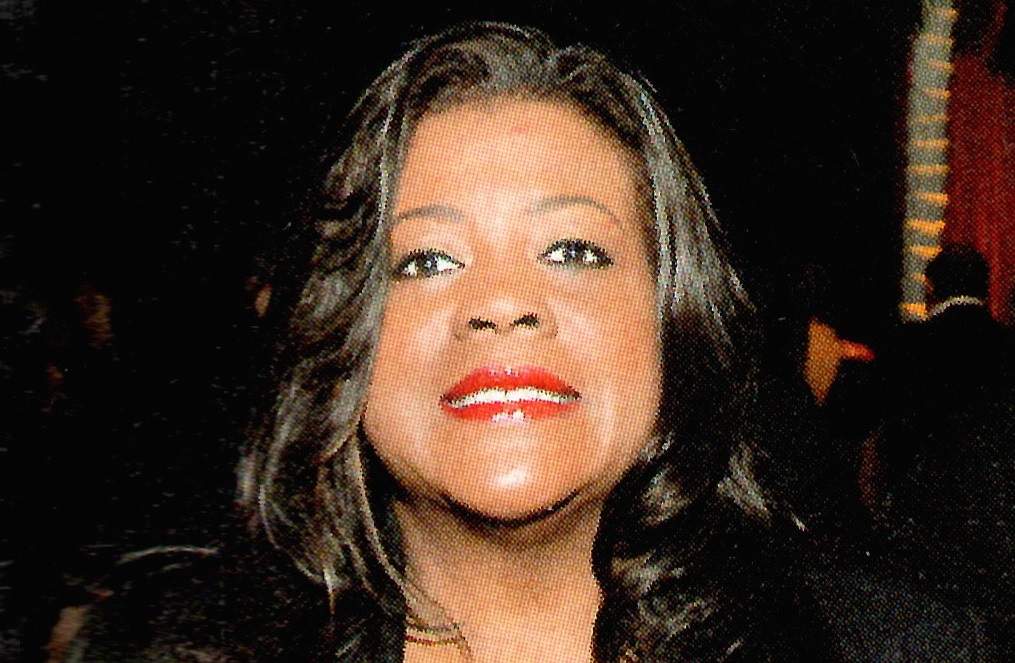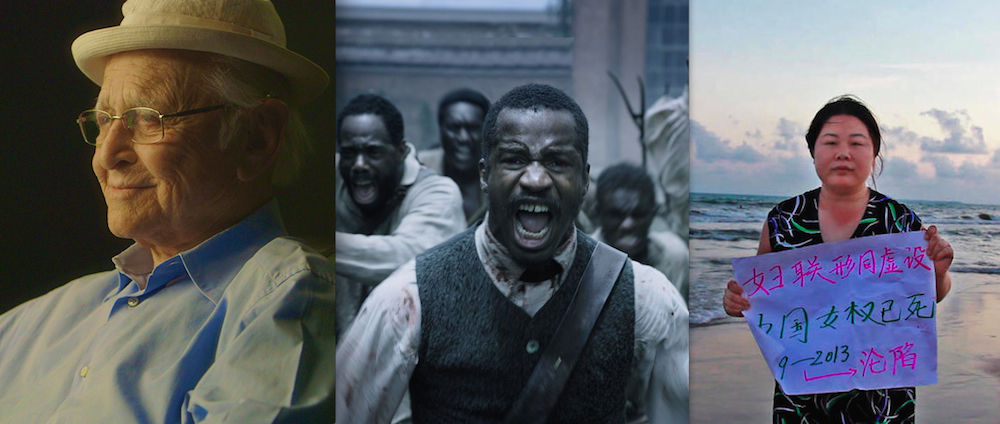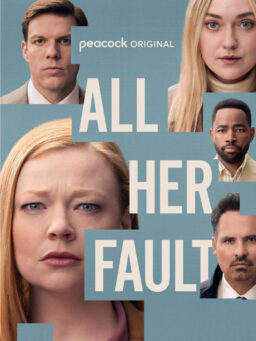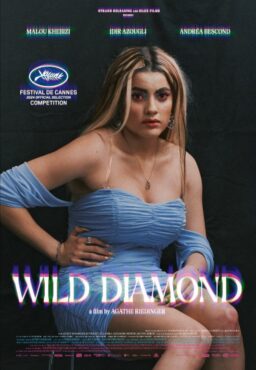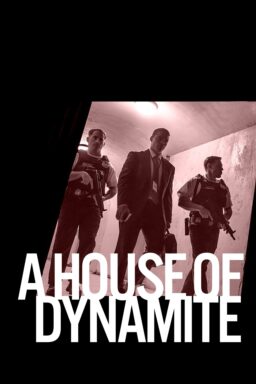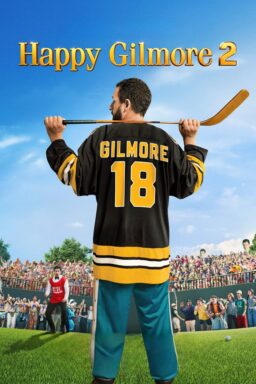When I won a trifecta at the Kentucky Derby, I was hailed as a heroine by my fellow revelers, who were natted out in their finest headgear. They marveled at the ability of anyone to guess three winning horses in a row, and in the correct order. Indeed it was not easy, but I had to admit that dumb luck played a big part.
My Sundance experience this year felt like winning the trifecta. In fact, I had a trifecta experience on every level: the three films I saw; the three Ebert Fellows who were chosen to attend the festival; the three film critics who wrote about the festival for Rogerebert.com (all of the coverage); and the three non-film events I was privileged to attend (The Ava Duvernay Array luncheon; Col Needham’s IMDB.com party, and the Sundance Institute’s Catalyst Forum gathering). I was able to stay at the festival for only a few days, but each day’s activities felt like luck, like I was making absolutely the right choices and in the right order. But for now, I will tell you only about the movies.

The opening night film was a documentary that felt like a reunion with an old friend. “Norman Lear: Just Another Version of You” provides an affectionate profile of the revered television writer and producer whose groundbreaking sitcom, “All in the Family,” confronted and obliterated countless taboos during its acclaimed run in the 1970’s. Directors Heidi Ewing and Rachel Grady (of “Jesus Camp” and “Detropia” fame) chronicle the vibrant life of Lear, an outspoken liberal whose activism often played a crucial role in his work. Lear was responsible for placing more African-American characters in prime time network series (“Sanford and Son,” “Good Times,” “Maude,” “The Jeffersons”) than any other single person in the history of television.
The film also provides a glimpse into the private life of Norman Lear, touching on his conflicted relationship with his father who he feels abandoned him by going to prison when Norman was nine years old. (The directors use the convention of having a nine-year-old actor walk through the movie as Norman, observing his life on film, while on a split screen the current 93-year-old Norman is looking back and commenting on his life.) The bigoted character of Archie Bunker was based partly on his father and is one of the things that still brings tears to his eyes today when he confronts it.
His family life is presented in brief vignettes (for more details you will have to read his memoir, “Even This I Get To Experience”), showing some of his former wife Frances’ influence on his decision to air the controversial episode where Maude contemplates having an abortion. He fought mightily with the network over that, but it was one of the most viewed and talked about episodes at the time.
The documentary glosses over conventional chronology, so it doesn’t mention the divorce, but it is delightful when you get to see his joy with the younger family he starts with a new wife, Lyn, when he was in his 60’s, including a son and twin daughters. When one boy at his son’s school laments the fact that his father was 67, Norman’s young son Ben charmingly tells his classmates that his father was 80, and was already a senior citizen before he was born. An older daughter from his previous marriage also rounds out his family picture.
But the historical punch comes when showing how Norman’s insistence on using comedy to tackle real issues of the day such as racism, abortion and feminism changed the face of television. And appearances by George Clooney, Mel Brooks, Carl and Rob Reiner, Bill Moyers, Russell Simmons, Alan Horn, Amy Poehler and Jon Stewart help to explain Lear’s place in the pantheon. But I give the directors credit for including two of the most riveting interviews with African-Americans, Esther Rolle and John Amos, who played the parents on the hit series “Good Times.” (You could scarcely walk into a house in the black community that didn’t have it onscreen.)
As much of a breakthrough as those shows were at the time, showing black families going through the daily activities of life and placing racial discussions in context, there were accusations that Lear was sometimes tone deaf to what could be considered racial stereotypes. There were arguments on the set of “Good Times,” particularly over the character of the son J.J. who went around shouting “Dy-No-Mite.” Both Rolle and Amos decried this portrayal and called for comedy without buffoonery. The film didn’t show exactly how those arguments were resolved. Nor did it mention Eric Monte, the black writer on Lear’s staff who was often credited with creating the characters of George and Louise Jefferson. But I noticed his name was included in the closing credits.
As if Lear’s groundbreaking television work wasn’t enough, he founded People For The American Way, to counteract the hi-jacking of patriotism by the extremist right Moral Majority. Lear wanted to show that Lefties were patriotic too. He refused to allow the narrative lie that patriotism was for the rightwing alone. He also bought one of the original copies of the Declaration of Independence and toured it around the country so that people of all ages and races could touch it and read it and contemplate the principles upon which this country was founded.
Lear received a much-deserved vigorous standing ovation after the screening and he walked out on stage with the swagger of a much younger man, declining a pro-offered chair and choosing to stand for the entire Q&A. He explained that beneath it all, we are the same, and that no matter who you are, we are all just versions of each other. “Norman Lear: Just Another Version Of You,” is a PBS American Masters production and was bought for theatrical distribution by Music Box Films.

I was also privy to the biggest hit of this year’s festival, Nate Parker‘s mammoth directorial debut which masterfully expropriates the title of D.W. Griffith’s 1915, “The Birth of a Nation.” Though Griffith’s epic is undoubtedly a landmark in cinema history, the racist portrayal of its black characters has rendered much of it unwatchable for many modern audiences. Parker’s film is, in many ways, a corrective to that picture’s faults. It recounts the true story of Nat Turner, a slave and preacher, who led the rebellion to free other African-Americans from the brutality of slavery in Southampton County, Virginia circa 1831. For now, in the public discourse, reference to “Birth Of A Nation,” will be to this one, taking away some of the sting of D.W. Griffith’s classic horror.
Nate Parker’s screen presence as an actor was already much noticed in movies like “The Great Debaters,” “RedTails,” and “Beyond The Lights.” There is an intelligence and gravitas in his mien that reminds me of a young Denzel Washington. And he brings this demeanor to his portrayal of Nat Turner. But it is not a one-note performance. Indeed what I most admired about the film is its nuances. It is not presented in black and white, but varying shades of grey. There are layers to this story, and layers and nuances in the development of the characters. And Parker allows you to witness the gradual radicalization of Nat Turner as he goes from being a preacher, teaching the Bible to other slaves during their Sunday church service, to using the word of God and that same Bible to incite rebellion against the slave-owners.
But just as important, he allows you to witness the gradual de-evolution of Samuel Turner (Armie Hammer), Nat’s master. Nat and Samuel grew up together and played together as boys and friends, as history confirms happened on some plantations. And over the years, even as they continued what looked like as benign a relationship you can have when one of you is legally owned by the other, there was never any doubt in anyone’s mind as to who was the master and who was the slave.
Parker said it was important not to make Armie Hammer’s character a psychotic beast. The real horrors of slavery, he says, is that someone could be by all accounts a “decent” human being, and still a slave-owner. Some of the other actors in the film are Aja Naomi King, who plays Nat’s wife, Aunjanue Ellis, who plays his mother, and Roger Guenveur Smith, who plays the slave who works in the house and doesn’t want to see things change.
Samuel’s mother (Penelope Ann Miller) notices how smart Nat is as a boy, and starts bringing him into the family home to teach him to read. Her book of choice was the Bible. After old man Turner dies, Samuel takes over the plantation, but he could never run it like the economic powerhouse it was under his father. So when it starts falling into disrepair, he is persuaded by other plantation owners to sell Nat Turner’s preaching services. In return for Nat preaching a sermon exhorting slaves to be obedient to their masters, the plantation owners would pay Samuel Turner money and ply him with booze and goods for his plantation. (The more blood money he takes, the more booze he consumes.)
I was taught in school (variously, depending on whether the teachers were white or black) that Nat Turner was a wild-eyed militant, or a hero doing what any normal person would do to free themselves from servitude. Parker plays him as an ordinary dignified man who loves the word of God. He is even-tempered, and does what he is told. He enjoys more privileges than some of the other slaves because of his ability to read and preach. But revolution was the last thing on his mind. Ironically, it is only when Samuel takes him to the other plantations to preach that he observes the atrocities committed against his fellow slaves and the verses of the Bible begin to take on new and militant meaning for him.
Parker said this film was seven years in the making. He stopped acting to devote his life to the making of it, also investing one hundred thousand dollars of his own money to get it started. He traveled around the country to talk to other investors and prayed and stayed focused on his mission. His backstory is a model in determination and discipline fueled by passion and a conviction that he was doing the right thing. Clearly I wasn’t the only person he impressed, considering the film landed the biggest distribution deal in Sundance history. It is reported that Fox Searchlight bought the film for $17.5 million dollars. That is reportedly the highest amount paid at any festival for a finished film, including Cannes and Toronto.
Experiencing the premiere of this film at Sundance was akin to being in a house of worship. There was a mood in that standing-room only auditorium that was spiritual. It was astonishing. When Nate Parker was introduced people stood up and applauded for him and the movie before they even saw the movie! And afterwards, many people commented on the wonder of that applause. In my 25 years of attending Sundance, I have never seen a standing ovation for a movie before you see the movie. That was a first.
Perhaps it was a way to exorcise some of the bad energies stemming from the exclusions of filmmakers of color surrounding the #OscarsSoWhite campaign. Or maybe it was the unconscious acknowledgment of the air of inequality and the deaths from shooting young black men that resulted in the #BlackLivesMatter movement. Perhaps it was just the collective spirit of people of good will wanting and hoping to do the right thing, and looking for a way out of some of the racial marginalization. And perhaps, just perhaps it was some of Parker’s blood, sweat and tears from the last seven years mixing with the spirit of the ancestors and bringing a feeling of grace and empathy to Sundance.

Bravery in the face of adversity is also a key theme in first time director Nanfu Wang’s startling documentary, “Hooligan Sparrow,” a film about female activism and dissent in China and the systematic sexual abuse of children.
Nanfu Wang was born in a very small province in China. She said her only dream was to one day be able to get a job where she could carry a little briefcase. For years she had no tv, had never gone to a movie, and indeed had not traveled outside of her province. She had no idea that one day she would travel all over China, live in America and attend an Ivy league school as an artist and filmmaker and have her first documentary premiere at Cannes. So her story was compelling before she even picked up a camera.
Wang follows human rights activist and feminist Ye Haiyan (a.k.a. “Sparrow”) on a perilous journey to China’s Hainan Province. Sparrow captures Wang’s attention on the internet when she offers to give free sex to migrant workers so that they don’t have to seek sex from young children. Sparrow’s chosen profession is not sex worker, but she becomes one in order to stand in solidarity with the workers who are sometimes forced into prostitution where they are mistreated and subjected to less than ideal working conditions.
After learning of an elementary school principal who takes six grade school girls ages 11-14 to a hotel where they are raped by the principal and a government official, Sparrow decides to call her troops together to seek justice. Her troops consist of a rag-tag group of about six other activists including a lawyer who exists to bail them out of jail. They travel to Hainan Province to protest the actions of the principal and the government official.
The penalty for rape is death, but the penalty for child prostitution is only 5-15 years. Sure enough, the principal and the government official use the defense that they paid the girls for sex, so they were prostitutes. But this case isn’t the entire focus of the movie. A great deal of the movie also involves how difficult it is for Nanfu Wang to even document these actions. She is stalked and interrogated and surreptitiously put under surveillance. At times her equipment is taken or destroyed. So she has to resort to hidden cameras, and sometimes only hidden tape recorders. At points there is no video and we are left to listen only to audio versions of her conversations with officials that is revealed in subtitles. It adds to the hand-made and urgent style of the documentary, giving it an immediacy that ironically improves it somehow.
Wang does successfully smuggle her film and audio recordings out of China and goes through a process to get her film edited and completed with the help of the Catalyst Forum at the Sundance Institute and other contributors. She tells us, unfortunately, that Sparrow and some of her followers end up in jail. At one point Sparrow and her teenage daughter are evicted from their apartment and all of their belongings are set out in the street. The Chinese artist and activist Ai Weiwei makes an art installation of it, laying it all out in stacks in a United States museum. I saw this display, I think in Miami, but it didn’t give me chills until I saw this movie and realized those were the real belongings of a real person who had dared to stand up to her government.
